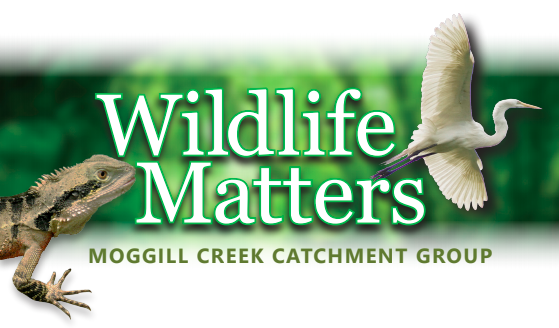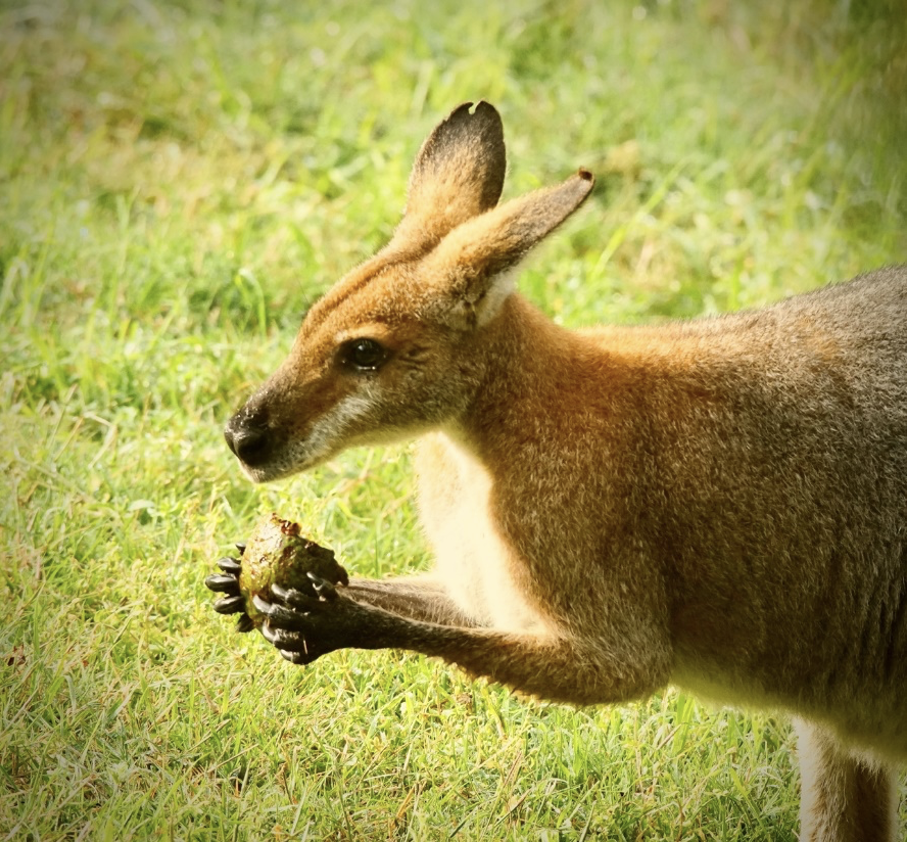
We have a number of wallabies in the north-western suburbs of Brisbane and it is easy to confuse them. On our property in Brookfield we are lucky to have both the Red-necked (Macropus rufogriseus) and Swamp (Wallabia bicolour) Wallabies plus the closely associated Red-legged Pademelon (Thylogale stigmatica). It is interesting how they have sorted out their niches, which are based mainly on their diet but also on their habitat.
The Red-necked Wallaby is the most common, and early morning and at dusk there are usually about 7 individuals around our house. They are mostly females with young, feeding on the lush grasses around the small dams on the property. They seem to prefer some of the weeds in the grass including Sida retusa, a dreadful weed with such a strong root system that even small seedlings are almost impossible to remove by hand. Last year we had a large crop of fruit on a huge Avocado tree and the wallabies were feeding on the fallen fruit, which they eat well before they ripen.

Red-necked Wallaby eating unripe Avocado – photo Ed Frazer
The Swamp Wallabies live around Gold Creek which borders our property and in the vine forest at the rear of the property. They eat a wide variety of plants and are never feeding on grass in the open areas. They are noted for eating fungus and attained the name of “Stinkies” from their unusual diet. The Pademelons are heard rather than seen. They have a habit of making a thumping noise when they are disturbed and they have benefitted by the Lantana, which they disappear into when approached. They are squatter than the three wallabies and are less common.
When we first came to live in Brookfield the Whiptail Wallaby also known as the Pretty-faced Wallaby (Macropus parryi) was the common species, but it is now found further up Gold Creek near the reservoir. It prefers the open forest with a grassy understory. There have been some Grey Kangaroos seen in the Brookfield area, but they are not normal inhabitants. It is thought they may have been rescued from road kills as joeys that have been released when they have matured.
There should be two rat Kangaroos in the area but they are nocturnal and difficult to see. They are the Rufous Bettong (Aepyprymnus rufescens) and the Long-nosed Potoroo (Potorous tridactylus). They are easily confused with the much more common Bandicoots , which can be identified as they never hop bipedally and have three toes on their forepaws, whereas the rat kangaroos have five. The Bettongs live among the Blady grass and build grassy nests, carrying the nesting material in their tails. They dig holes to find underground fungi which are their main food. The Potoroos live in the wetter forest and dig holes similar to the Bandicoots. They feed on roots and fungi.
Our wonderful diverse range of Macropods in the western suburbs is a great asset but is at risk from uncontrolled cats and dogs. However, the greatest danger is road kills, so drive carefully at dusk and dawn when these interesting animals are about.
Ed Frazer
Wildlife Matters is published in: 

